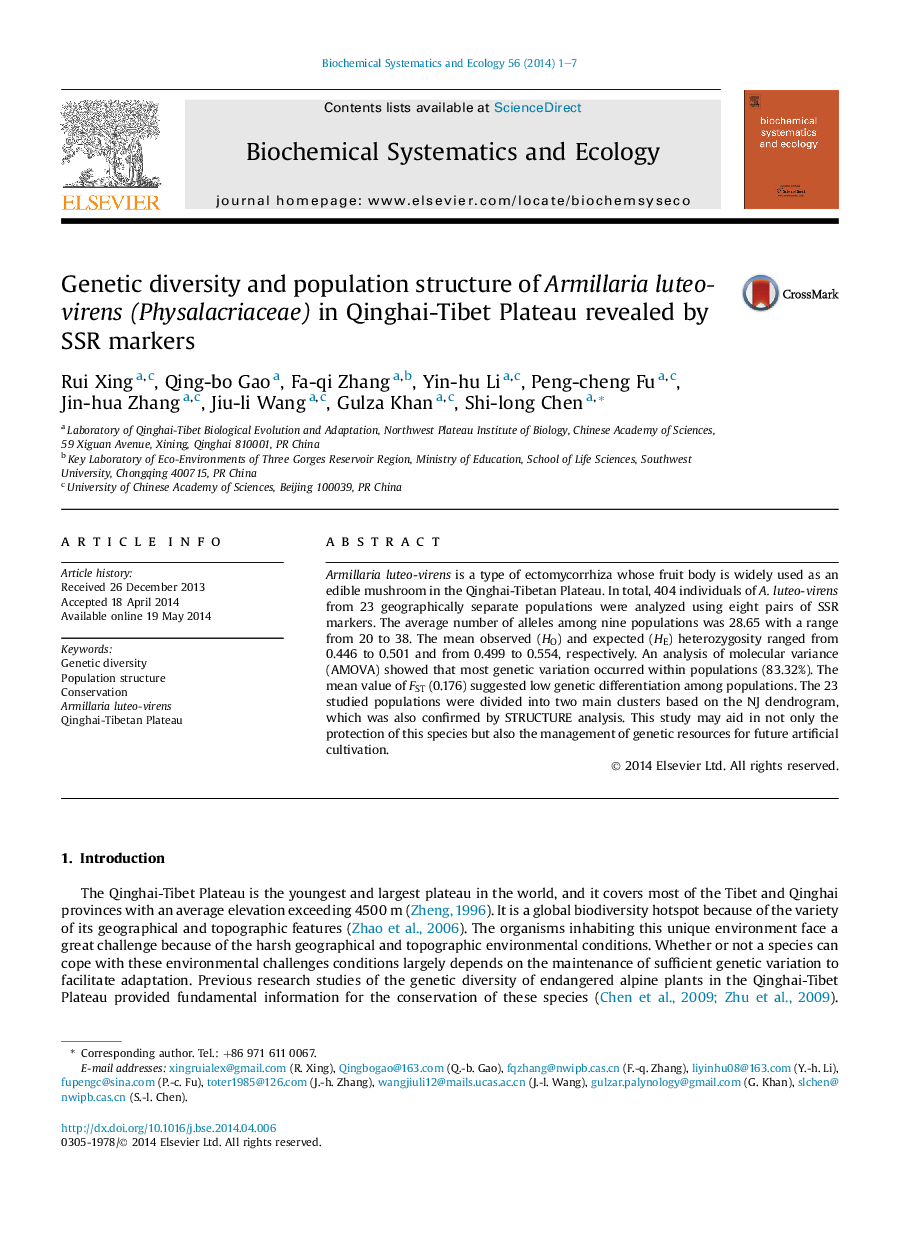| Article ID | Journal | Published Year | Pages | File Type |
|---|---|---|---|---|
| 1354037 | Biochemical Systematics and Ecology | 2014 | 7 Pages |
•A total of 404 individuals from 23 populations was analyzed using eight pairs of SSR markers.•An analysis of molecular variance showed that most genetic variation occurred within populations.•The 23 populations were divided into two main clusters based on the NJ dendrogram and STRUCTURE analysis.•May aid in the protection for this species and the management of genetic resources for artificial cultivation.
Armillaria luteo-virens is a type of ectomycorrhiza whose fruit body is widely used as an edible mushroom in the Qinghai-Tibetan Plateau. In total, 404 individuals of A. luteo-virens from 23 geographically separate populations were analyzed using eight pairs of SSR markers. The average number of alleles among nine populations was 28.65 with a range from 20 to 38. The mean observed (HO) and expected (HE) heterozygosity ranged from 0.446 to 0.501 and from 0.499 to 0.554, respectively. An analysis of molecular variance (AMOVA) showed that most genetic variation occurred within populations (83.32%). The mean value of FST (0.176) suggested low genetic differentiation among populations. The 23 studied populations were divided into two main clusters based on the NJ dendrogram, which was also confirmed by STRUCTURE analysis. This study may aid in not only the protection of this species but also the management of genetic resources for future artificial cultivation.
